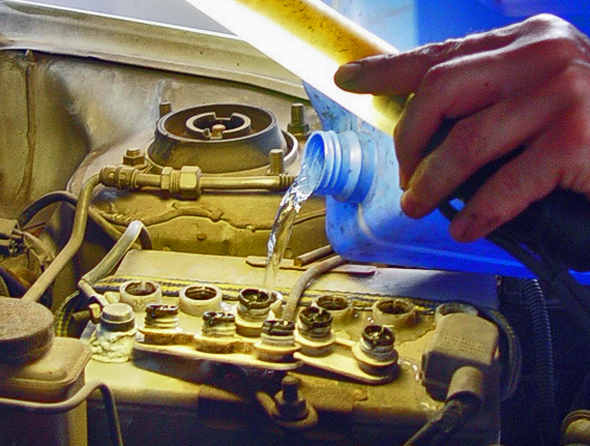A Car Maintenance Checklist
November 12, 2015 | in Car Maintenance, Defensive Driving Online, Everyday Driver

In the near future your car may be self-driving, but the era of cars that can perform their own maintenance is a long way off. Until that day comes, here’s a basic car maintenance checklist of things you can do to keep your car running safe and sound all year round.
For more help, bookmark our DIY car maintenance tool for step by step tips for changing a tire, oil, or jump starting a car.
1. Check the owner’s manual
If you haven’t done it yet, read your car owner’s manual and get acquainted with information on car safety and maintenance. The better you know your car the better you can maintain it.
2. Check tire pressure
Road safety and performance begins with the tires. So check tire pressure regularly and keep tires inflated at the recommended pressure to ensure peak performance. This is especially important in winter months when cold weather can cause tire pressure to drop. Also, be sure to check tread wear to make sure your tires are safe. Having the tires rotated at recommended intervals will help to reduce tread wear and extend the life of the tires.
3. Check the levels of all fluids
Just like your body, your car needs critical fluids at specific levels to keep it running properly. And checking your car’s fluids (oil, transmission fluid, coolant) levels regularly is a good habit to get into, especially if you own an older car. If you are a D-I-Y kind of person, be sure to consult the owner’s manual to make sure that you can check and top off all fluids correctly. You can also have this done at the dealership or at a local “lube” business that specializes in car fluid maintenance. Many offer coupons and special deals that can save you money.
4. Check the air filter
Clean air intake is essential for proper car performance, which is where the air filter comes in. Most air filters keep clean air flowing into the engine for 12,000 to 15,000 miles before needing to be replaced. Your dealer or local “lube” business will typically check, and if needed, replace the air filter when they check the fluids. Or you can go the DIY route by checking the owner’s manual to make sure you replace your dirty air filter with the right part and install it correctly.
5. Check the battery
Like other components of your car’s engine kept hidden under the hood, it’s easy to forget about the battery. That is until your car won’t start. Every couple of months, especially in cold weather, you’ll want to give your battery a visual once-over. If you see cracks, leaks, or other signs of physical damage, it’s time to have your battery replaced. If you see corrosive build-up on the terminals–this can cause a poor connection and even prevent your car from starting–you’ll want to clean those terminals up. But all that white flaky corrosive build-up is highly acidic, so you’ll want to consult the owner’s manual for guidelines. There are also a number of “How to” battery terminal cleaning videos posted online you can watch to make sure you do it correctly.
6. Check your windshield wipers
There is nothing more annoying–and potentially dangerous–than driving with a dirty windshield. If you find that your car’s windshield wipers aren’t quite doing the job, you should inspect them for signs of wear and clean them off. You’ll also want to make sure the windshield wiper fluid in the reservoir is clean, and that it flows onto the windshield properly. If you find that it’s time to change the windshield wipers, you can either do it yourself or have the local “lube” shop pop them on.
7. Have a professional check your car
As good as your DIY car maintenance skills may be, it’s best to have your car inspected by a professional–either at the dealership or a car repair shop you trust–to make sure your car keeps running properly and keeps you and your passengers safe while on the road.
Don’t forget that you can still enter our giveaway, and win a set of Bose earphones and a car bluetooth kit by liking us on Facebook!






